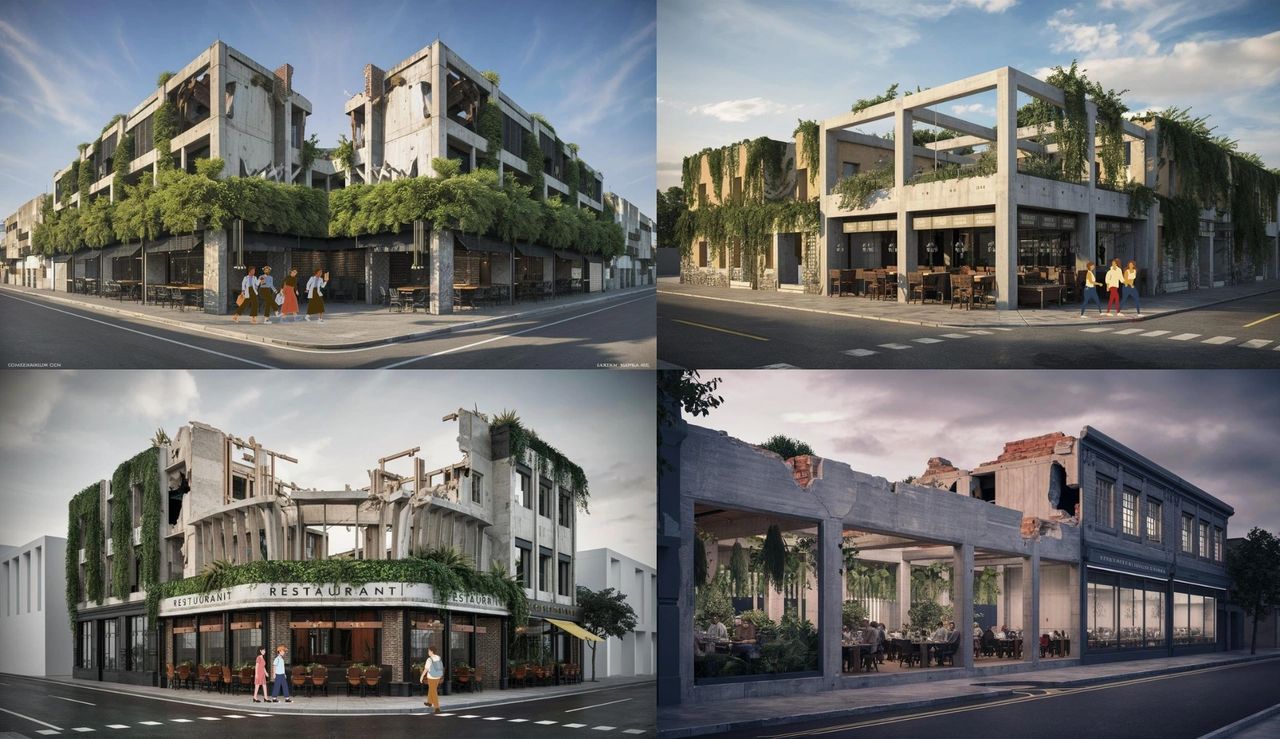Architects’ Business Blog
Insights, Strategies and Success Stories
-

Navigating Change; Monitoring and Evaluation
Monitoring and evaluation are crucial for the successful transition of a boutique architecture firm to a new business model. This involves tracking performance, gathering feedback, and making iterative adjustments to ensure the business model remains effective and aligned with strategic goals. Continuous monitoring and evaluation are essential for sustaining the benefits of the change and…
-

Navigating Change; Implementation Planning
Designing a new business model is only part of the process. Implementing it effectively is crucial for realizing the intended benefits. This involves developing a detailed action plan, managing change, and addressing potential risks. Successful implementation requires careful planning, resource allocation, and continuous stakeholder engagement.
-

Navigating Change; Designing Your New Business Model
Part 4 of 6 – recommended pre-requisite posts Part 1; Evolving Your Boutique Architecture Practice Part 2; Assessing the Current Status Part 3: Setting Strategic Goals With strategic goals in place, the next step is to design a new business model that aligns with these goals. This involves rethinking the value proposition, revenue streams, cost…
-

Navigating Change; Setting Your Strategic Goals
Using the SMART criteria (Specific, Measurable, Achievable, Relevant, Time-bound) is effective and widely used for goal setting. However there are several other, innovative approaches gaining traction such as; PACT, OKRs, FAST, HARD, V2MOM, and BHAGs. These alternatives provide diverse methodologies to enhance agility, engagement, and visionary leadership.
-

Business Strategy Emerging Trends
Beyond Mission, Vision, Goals! While foundational elements like vision, mission, goals, culture, and values remain essential to building a strong business, it’s time to rethink how they are approached and applied. What is your company’s Purpose? The traditional mission statement, which articulates a company’s primary objectives and activities, is being augmented or even replaced by…
-

Navigating Change; Assessing the Current Status
Having a clear understanding of the current status of a business involves a thorough analysis of the existing business model, operational processes, resources, and market positioning. This assessment guide will serve as a baseline from which to plan and implement changes.
-

Urban Adaptive Reuse with a Twist; Conflict Zones
Telling the Stories of Nations through Design ‘From Palestine to Sudan, Syria to Iraq, and beyond, countless cities grapple with the aftermath of conflict, desperately needing spaces that foster healing, social cohesion, and economic revival.’ The idea presented in this article is the concept of adaptive reuse with a focus on preserving the physical scars…
-

Navigating Change; Evolving Your Boutique Architecture Practice
July 8, 2024|#Business of Architecture Part 1 of 6 This is the first in a six-part series intended to guide small and boutique architecture firms through modifying their business models. It provides a structured approach and actionable steps to facilitate well-informed decisions. Understanding the Need for Change The architecture industry is constantly evolving. For boutique…
-

Adaptive Reuse in Architecture
A Growing Business Niche to Explore Adaptive Reuse; a significant niche offering a unique business opportunity for architects. In this post I shall take a closer look into the intricacies of adaptive reuse and its potential to shape the industry’s future. In addition to examining the core principles of Adaptive Reuse, I will also…
-

Vertical Farms; Disrupting Urban Landscapes
A Niche Opportunity for Architects “The global vertical farming market size was valued at $5.70 billion in 2023 & is projected to grow from $6.92 billion in 2024 to $50.10 billion by 2032” – according to Fortune Business Insights Event: The Vertical Farming Show 10-11 September 2024, Dubai, UAE. The “5th Global Vertical Farming Show” and the only exclusive…
-

10 Steps to Create Your Green Architecture Strategy
A Competitive Edge As the demand for sustainable design continues to rise, architecture firms must adapt their business strategies to remain competitive and meet client expectations. By seamlessly integrating green infrastructure principles into your existing practices, you can position your firm as an industry leader, drive cost savings, and contribute to a more sustainable built…
-

Energy Efficiency in Buildings
The Business Case for Architecture Need for Change | Energy Basics | Building Efficiency Defined | Measuring Efficiency | Case Studies | Net-Positive Buildings | Business Case-Benefits | Business Case-Ethics | Business Case-Financial Advantages Buildings significantly contribute to global energy consumption. To tackle climate change and reach net-zero carbon emission goals by 2030 for new…
-

A Business Case for Environmentally Conscious Architecture
Observing World Environment Day 05.06.24 The Business Advantage of Eco-Architecture “Oxford Economics forecasts that the global volume of construction work is expected to increase by US$4.2 trillion over the next 15 years, bolstered by the burgeoning green economy” – Global Construction and Infrastructure report by RICS. As the world moves towards a more sustainable future, environmentally conscious…
-

The Case for Biomimetic Architecture
Biomimicry; A Powerful Tool for Innovation, Sustainability, and Cost-Effectiveness Biomimicry presents a compelling approach to architectural design by emulating nature’s ingenious solutions. Here’s why embracing biomimicry can benefit architects’ businesses and clients: Notable Figure in Biomimetic Architecture Michael Pawlyn Michael Pawlyn, a British architect born in 1967, is recognized for his innovative work in biomimetic…
-

A Viable CSR Business Strategy; Pro-bono in Architecture
What Does Your CSR Look Like? Is pro-bono work a feasible and beneficial component of your firm’s CSR strategy? Can it support sustainable design and construction? Architecture is fundamentally about social responsibility and accountability. The enduring nature of buildings and their far-reaching impact on humanity and the environment demand a holistic consideration of all aspects, even…
-

7 Key Trends in Sustainable Architecture
Build Your Competitive Edge in 2024. “In the lineup of climate villains, architecture towers above many” – New York Times In a world where buildings consume nearly 40% of global energy and produce approximately one-third of greenhouse gas emissions, it’s clear that architects hold the key to unlocking a more sustainable future. This is according to…
-

Regenerative Architecture
In an era marked by rapid urbanization and intensifying climate change, it’s crucial for the architecture industry to evolve beyond the tenets of conventional sustainable design. To truly make a lasting impact, I believe the industry must shift its focus towards holistic and regenerative design practices that prioritize rejuvenating the environment and fostering a net-positive…
-

Building a Resilient Architecture Team; Expertise and Staffing
Your Team is the Backbone of your practice, instrumental in driving innovation, fostering client satisfaction, and ensuring long-term success.
-

Tips to Future-Proof your Architectural Practice
7 Basic Strategies to adopt To stay relevant in a rapidly evolving industry, being ahead of trends, and not just keeping up, is key to ensuring a resilient architectural practice.
-

Architecture in the Olympics: A Blast from the Past
From 1912 to 1948, the Olympic Games included five creative arts categories, with architecture taking center stage. The first competition kicked off at the 1912 Stockholm Games, with entries tasked with blending art and sport.